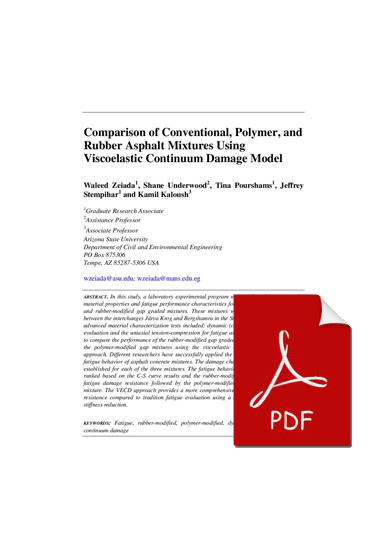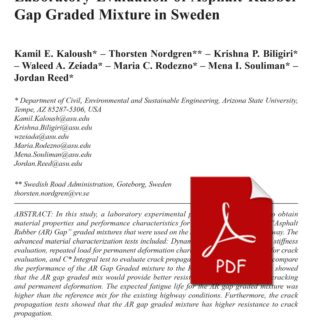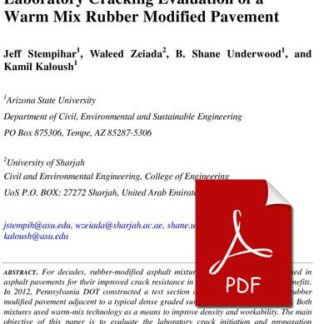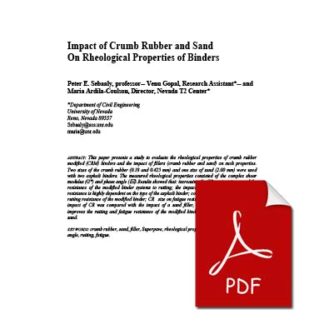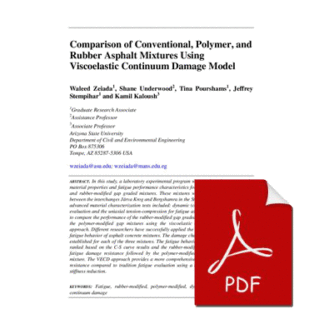Description
In this study, a laboratory experimental program was conducted to compare the material properties and fatigue performance characteristics for reference, polymer-modified and rubber-modified gap graded mixtures. These mixtures were placed on E18 highway between the interchanges Järva Krog and Bergshamra in the Stockholm area of Sweden. The advanced material characterization tests included: dynamic (complex) modulus for stiffness evaluation and the uniaxial tension-compression for fatigue assessment. The data was used to compare the performance of the rubber-modified gap graded mixture to the reference and the polymer-modified gap mixtures using the viscoelastic continuum damage (VECD) approach. Different researchers have successfully applied the VECD model to describe the fatigue behavior of asphalt concrete mixtures. The damage characteristic (C-S) curves were established for each of the three mixtures. The fatigue behavior for the three mixtures was ranked based on the C-S curve results and the rubber-modified mixture showed the best fatigue damage resistance followed by the polymer-modified mixture and the reference mixture. The VECD approach provides a more comprehensive analysis to evaluate fatigue resistance compared to tradition fatigue evaluation using a number of cycles at a given stiffness reduction.

